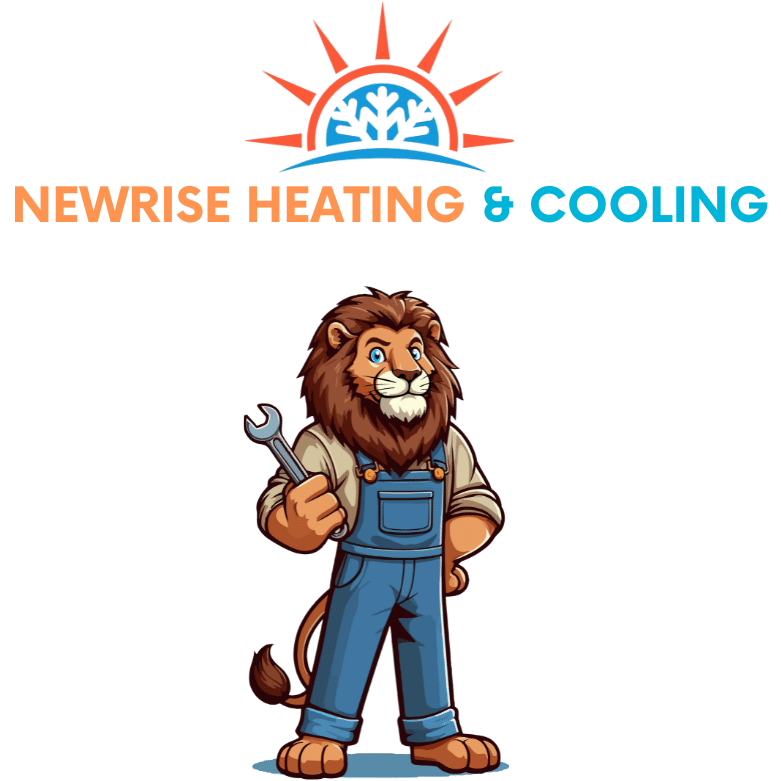Many homeowners overlook the importance of annual heater inspections, which can lead to costly repairs or unsafe heating conditions. This guide will cover the essential steps of preparing your heater for inspection, identifying common heater problems, and implementing safety measures during the process. By reading this content, readers will learn how to effectively troubleshoot issues with their heat exchanger, tank, heating oil system, and electrical wiring. Armed with this knowledge, homeowners can save money and ensure their heating systems operate safely and efficiently.
Key Takeaways
- Annual heater inspections improve energy efficiency and prevent costly breakdowns
- Clearing the area around the heater aids in thorough and efficient maintenance
- Recognizing signs of wear and tear helps address issues before they escalate
- Proper ventilation during inspections reduces risks of gas accumulation and improves safety
- Finding a certified HVAC technician ensures professional care for heating systems
Understand the Importance of Annual Heater Inspections
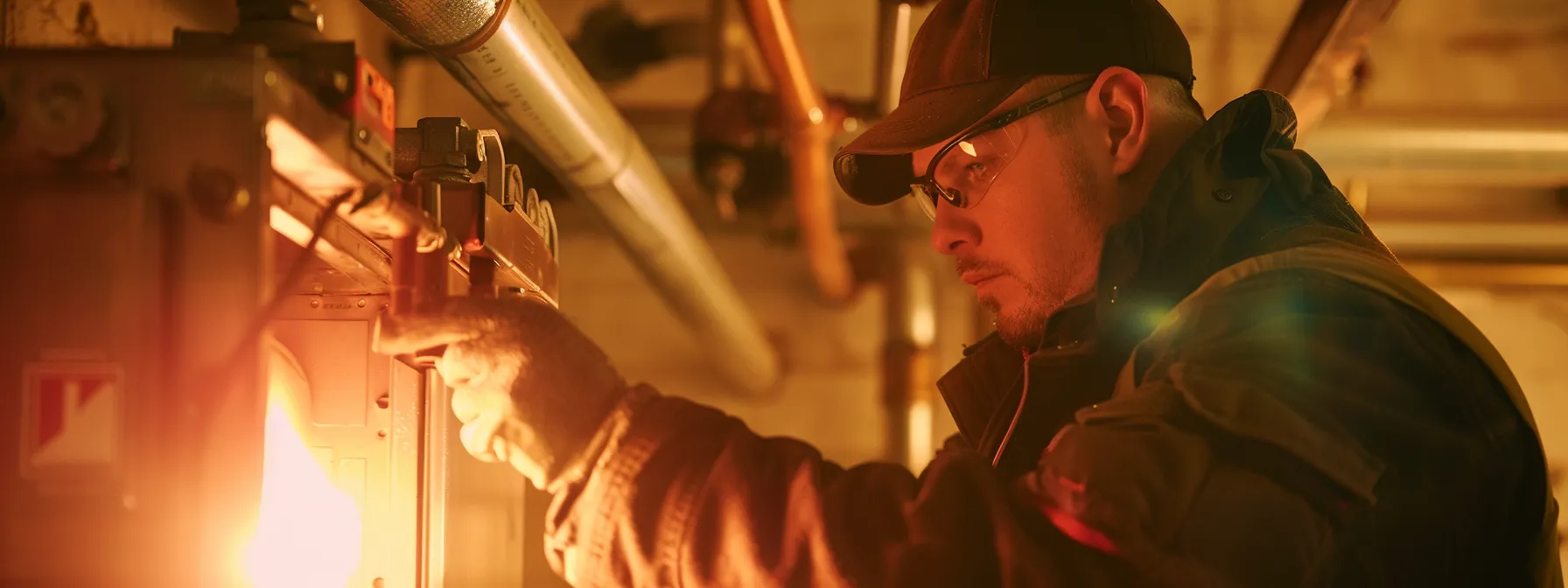
Conducting annual heater inspections is essential for ensuring the efficient operation of a heating system. Regular check-ups help improve energy efficiency by cleaning dust from key components, including the vacuum and pilot light areas. Additionally, maintenance can prevent costly breakdowns by identifying potential issues early, such as problems within the furnace. Understanding these points underscores the value of proactive care for home heating systems.
Explore How Regular Check-Ups Improve Energy Efficiency
Regular check-ups significantly enhance energy efficiency in heating systems. During these inspections, HVAC professionals can identify and fix issues such as gas leaks, clean sensors, and inspect chimneys to ensure they operate optimally. Furthermore, assessing the system in basements and other key areas allows for a comprehensive review that can lead to improved airflow and lower energy bills, addressing homeowners’ concerns about efficient heating and comfort.
Learn About Preventing Costly Breakdowns With Maintenance
Regular maintenance of heating systems plays a vital role in preventing costly breakdowns. Over time, components such as wires, pipes, and other parts can suffer from wear and tear, leading to performance issues that may affect indoor air quality. By conducting annual inspections, HVAC professionals can pinpoint potential problems before they escalate, ensuring that the system operates efficiently and reducing the likelihood of unexpected repairs.
| Component | Potential Issue | Impact |
|---|---|---|
| Wires | Fraying or damage | Electrical failures, safety hazards |
| Pipes | Leaks or corrosion | Heat loss, increased energy bills |
| Filters | Clogging | Poor indoor air quality, system strain |
Annual heater inspections are important. Now, learn how to get your heater ready for the inspection.
Prepare Your Heater for the Inspection Process
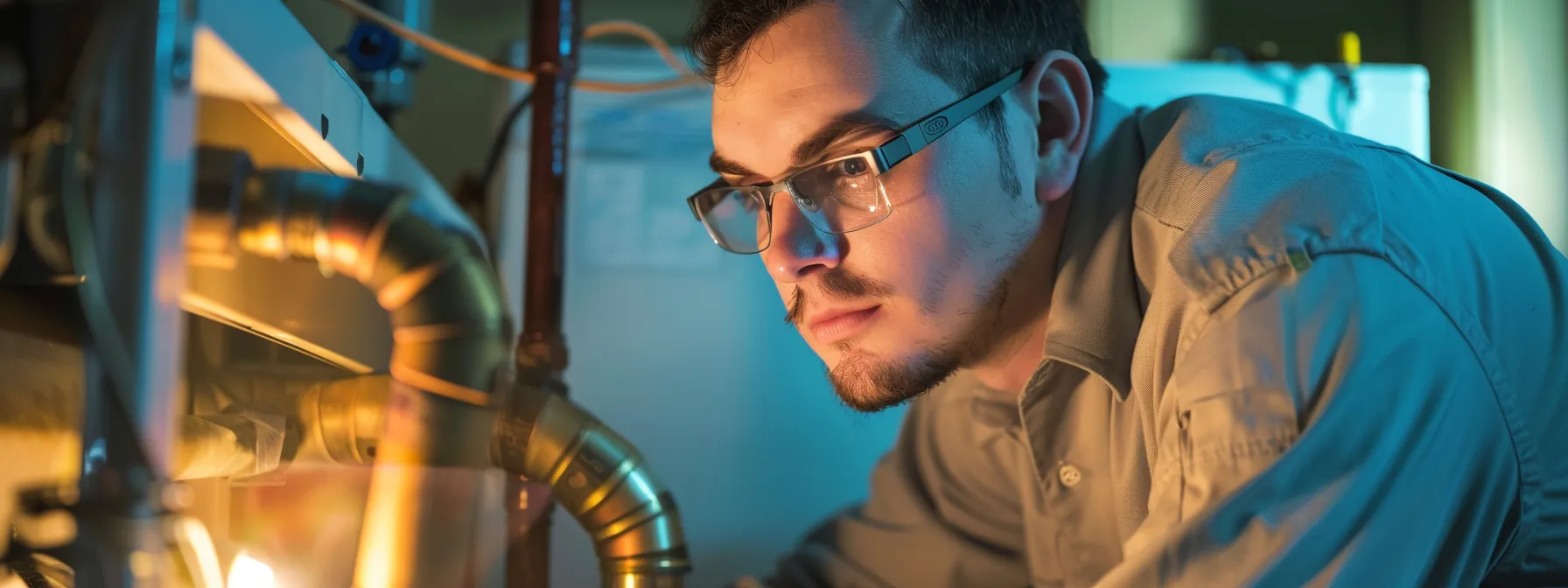
Prepare Your Heater for the Inspection Process
To ensure a smooth inspection process, homeowners should begin by turning off the power and fuel supply to the heater safely. Clearing the area around the heater will enhance accessibility for the HVAC professional, facilitating a thorough furnace maintenance check. Upcoming sections will discuss the importance of addressing leaks, checking the air filter, and removing soot to optimize the system’s energy efficiency.
Turn Off Power and Fuel Supply Safely Before Starting
Before starting the heating inspection, it is crucial to turn off the power and fuel supply to the heater. This step ensures the safety of the HVAC professional and prevents any accidental activation while the condensate pump and other components are being inspected. Additionally, addressing pressure checks and securing the flue pipe connection during this preparation phase can help identify potential issues early, reducing the risk of needing extensive furnace repairs later on.
Clear the Area Around Your Heater for Easy Access
Clearing the area around the heater is essential for effective heating maintenance. Homeowners should remove any debris, furniture, or appliances that obstruct access to the boiler or other heating components, ensuring that HVAC professionals can perform their inspections efficiently. This preparation not only speeds up the process but also allows for a more thorough evaluation of the heating system, enabling professionals to check essential elements like gas connections and humidifier functions without hindrance.
Getting ready for the inspection goes beyond just preparation; it sets the stage for thorough checks. Now, it’s time to look at a step-by-step heater inspection checklist that will guide you through the essential tasks.
Follow a Step-by-Step Heater Inspection Checklist
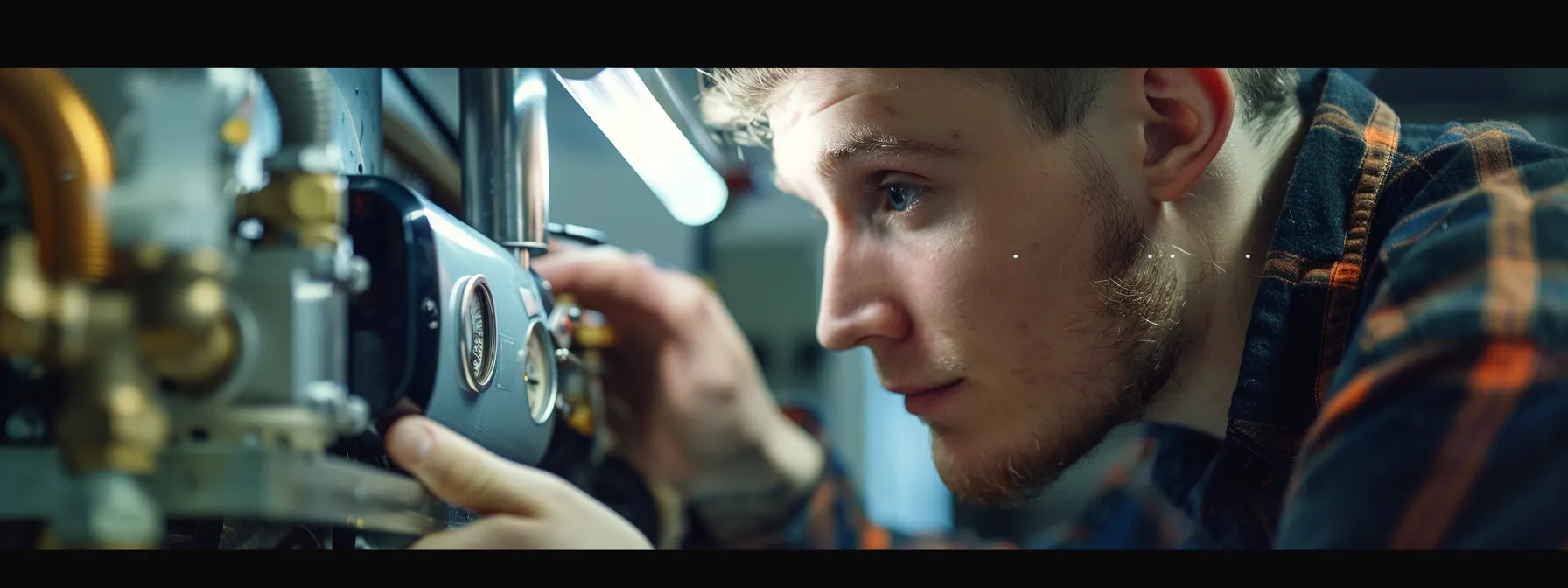
To ensure an efficient heating system, an annual inspection checklist is vital. Beginning with examining the thermostat functionality for accuracy sets the stage for optimal performance. Next, inspecting filters for dirt and replacing them if necessary can prevent airflow issues. Finally, checking for leaks in gas and air connections is crucial for safety and efficiency, particularly concerning carbon monoxide and condensation management.
Examine the Thermostat Functionality for Accuracy
Examining the thermostat functionality for accuracy is a vital step in the annual heater inspection checklist. A well-calibrated thermostat helps maintain optimal efficiency by regulating the temperature effectively and avoiding overheating or excessive cooling, which can lead to increased energy bills. Additionally, a precise thermostat minimizes the risk of carbon monoxide buildup by ensuring the heating system operates correctly, ultimately improving airflow and air quality by reducing particulates in the home.
| Action | Benefit | Potential Risks |
|---|---|---|
| Check thermostat accuracy | Ensures optimal heating efficiency | Increased energy consumption |
| Calibrate as needed | Enhances comfort levels | Risk of carbon monoxide exposure |
| Monitor airflow | Improves indoor air quality | Potential health issues from particulates |
Inspect Filters for Dirt and Replace if Necessary
Inspecting filters for dirt and replacing them as necessary is vital for maintaining a heating system‘s efficiency and indoor air quality. Clogged filters can restrict airflow, causing strain on the system and potentially leading to issues like corrosion within ducts or increased carbon levels in the environment. Additionally, a clean filter helps ensure that the carbon monoxide detector functions properly, safeguarding the home from dangerous gas build-up while allowing flue gas to escape efficiently:
- Regularly check and clean filters to improve airflow.
- Replace dirty filters to prevent damage and ensure safety.
- Monitor duct systems for any signs of corrosion or blockages.
Check for Leaks in Gas and Air Connections Carefully
Checking for leaks in gas and air connections is a crucial part of the heater inspection checklist. Professionals should inspect valves and the limit switch for any signs of wear or dirt that could impede their function. A thorough examination of these components can help identify unusual noises or airflow issues, ensuring proper ventilation and enhancing the overall safety and efficiency of the heating system.
The checklist revealed much about the heater’s condition. Yet, understanding the common problems can help avoid bigger issues down the line.
Identify Common Heater Problems and Solutions
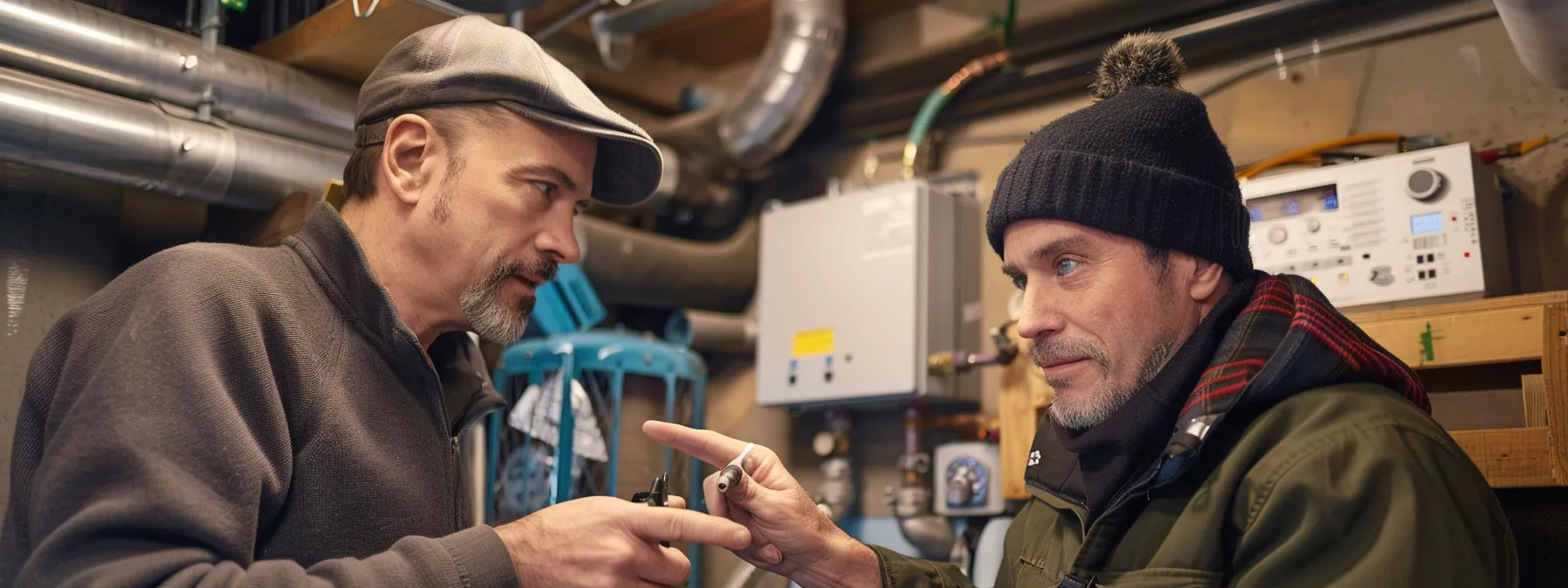
Recognizing signs of wear and tear on heating system components is crucial for maintaining efficiency and safety. Homeowners should be aware of unusual noises or odors, such as mold or propane smells, as these can indicate underlying issues. Addressing these warning signs promptly can prevent costly repairs and ensure the heating system operates effectively, benefiting from reliable HVAC services.
Recognize Signs of Wear and Tear on Components
Recognizing signs of wear and tear on components during annual furnace maintenance is vital for maintaining a reliable heating system. Homeowners should pay attention to unusual sounds or inefficient flame performance, as these may indicate potential issues with the furnace or radiators. A malfunctioning thermostat may also impact central heating efficiency, leading to uncomfortable temperatures and increased energy bills, making early detection essential to avoid costly repairs and ensure consistent comfort in the home.
Address Unusual Noises or Odors From the Heater Promptly
Addressing unusual noises or odors promptly is crucial for the safety and efficiency of a furnace during an annual inspection. Noises like grinding or hissing can indicate issues with the exhaust system or complications with the roof ventilation, while odors such as gas or burning can signify significant problems that require immediate professional attention. Homeowners should not ignore these warning signs, as they can lead to hazardous conditions; instead, it’s essential to contact an HVAC professional who can thoroughly assess the system, ensuring safe operation and peace of mind.
As owners tackle common heater troubles, the next step demands attention to safety. Implementing precautions during inspections not only protects equipment but ensures peace of mind for everyone in the home.
Implement Safety Measures During Inspections
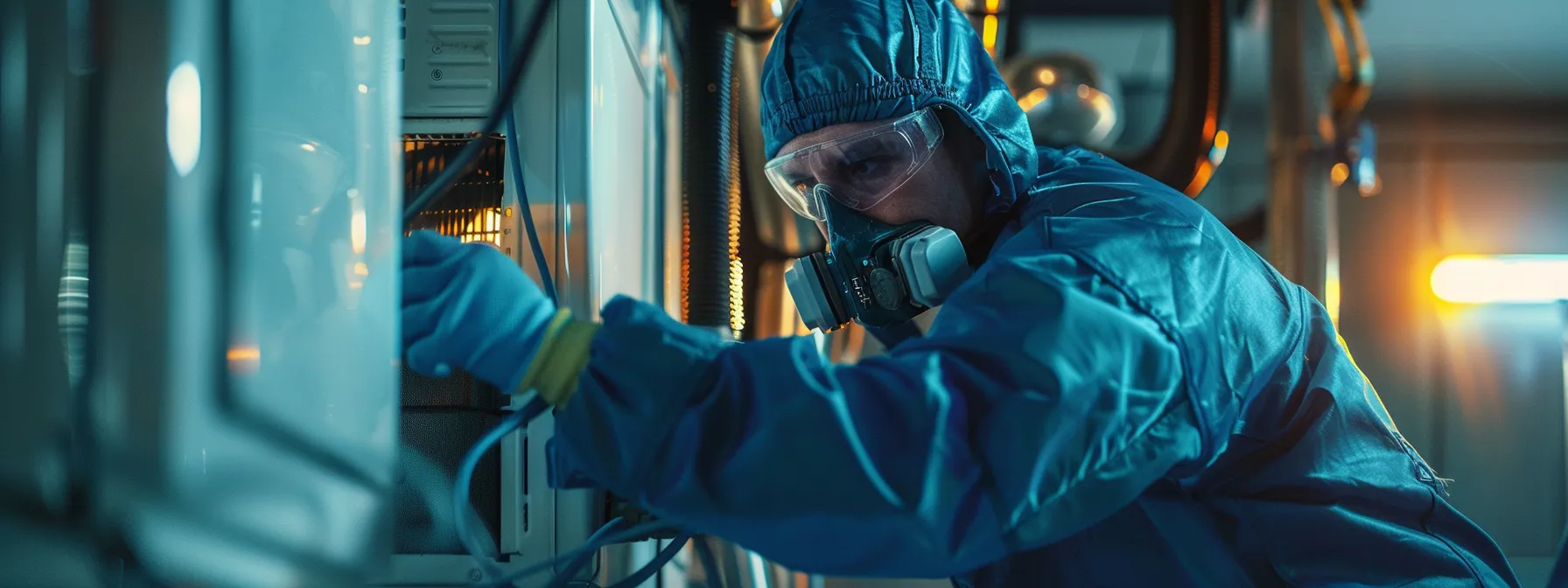
Implementing safety measures during heater inspections is vital for protecting both the inspector and the home. Using proper protective gear while inspecting equipment guards against potential hazards. Additionally, ensuring adequate ventilation helps prevent gas accumulation risks, particularly in gas furnace maintenance. Each of these steps is crucial for a comprehensive inspection checklist that addresses combustion and friction concerns effectively.
Use Proper Protective Gear While Inspecting Equipment
Using proper protective gear while inspecting heating equipment is essential to ensure safety during the process. HVAC professionals should wear gloves to protect against metal edges and sharp components, as well as safety goggles to shield the eyes from dust and debris. Additionally, confirming that a smoke detector is functioning can provide an extra layer of safety, helping to quickly address any issues related to combustion or gas leaks. New Rise HVAC emphasizes the importance of documenting the inspection process to maintain accurate records, while also monitoring room temperature to ensure optimal performance during routine inspections.
Ensure Ventilation to Prevent Gas Accumulation Risks
Ensuring proper ventilation during heater inspections is crucial for preventing gas accumulation risks. By opening windows or using exhaust fans, the risk of harmful gases, such as carbon monoxide, can be significantly reduced. This proactive approach not only safeguards the health of those present but also enhances the overall safety of the heating system throughout the inspection process:
| Action | Benefit | Risks of Inadequate Ventilation |
|---|---|---|
| Open windows during inspection | Improves fresh air circulation | Risk of gas build-up |
| Use exhaust fans | Helps remove stale air and gases | Increase in indoor air pollutants |
| Check air flow in the inspection space | Ensures ventilation is functioning well | Potential for hazardous exposure |
Even with safety measures in place, problems can still arise. Understanding when to call for expert help can save time and keep your home comfortable.
Know When to Seek Professional Assistance
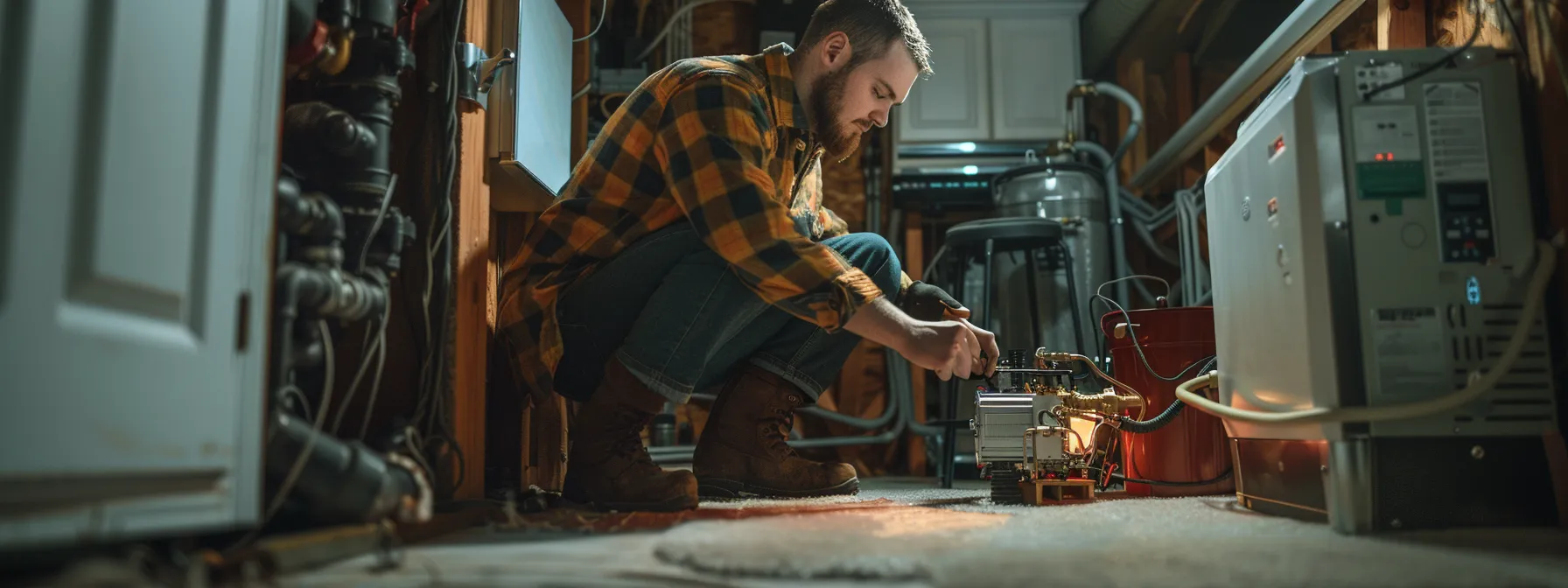
Homeowners should recognize issues with their heating system that necessitate professional assistance. This section covers how to identify problems that require expert attention, ensuring safety and efficiency. It also highlights the importance of finding a certified HVAC technician nearby. These insights empower homeowners to maintain their heating systems effectively and seek help when needed.
Determine Issues That Require Expert Attention
Homeowners should be vigilant for signs that indicate their heating systems require professional assistance. If the heater produces unusual noises, such as banging or hissing, or if there are persistent odors like gas or burning, these may signal serious issues that necessitate the expertise of a qualified HVAC technician. Timely intervention can prevent minor problems from escalating into costly repairs, ensuring that the heating system operates safely and efficiently throughout the cooler months.
Find a Certified HVAC Technician Near You
Finding a certified HVAC technician nearby is crucial for ensuring that heating systems receive the professional care they require. Homeowners can start by checking online directories or utilizing local service platforms to find technicians with positive reviews and the necessary certifications. Additionally, seeking recommendations from friends or family can lead to trusted professionals who can efficiently address specific heating issues and maintain optimal performance.
| Action | Benefits | Considerations |
|---|---|---|
| Search online directories | Access to licensed professionals | Check for customer reviews |
| Ask for recommendations | Trustworthy suggestions | Consider local service experiences |
| Verify certifications | Ensures expertise and safety | Look for industry certifications |
Conclusion
Conducting annual heater inspections is vital for maintaining a safe and efficient heating system. Regular check-ups enhance energy efficiency, prevent costly breakdowns, and ensure optimal performance throughout the colder months. Homeowners must recognize the importance of preparing for these inspections and knowing when to seek professional help. By prioritizing heater maintenance, they protect their investment and enhance indoor comfort, ultimately leading to peace of mind.



